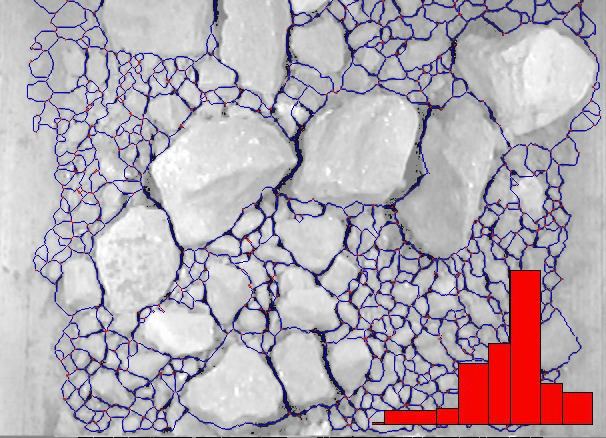 | ||
Particle size is a notion introduced for comparing dimensions of solid particles (flecks), liquid particles (droplets), or gaseous particles (bubbles). The notion of particle size applies to colloidal particles, particles in ecology, particles present in granular material (whether airborne or not), and particles that form a granular material (see also grain size).
Contents
Measuring particle size
There are several methods for measuring particle size and particle size distribution. Some of them are based on light, other on ultrasound, or electric field, or gravity, or centrifugation.
In all methods the size is an indirect measure, obtained by a model that transforms, in abstract way, the real particle shape into a simple and standarized shape, like a sphere (the most usual) or a cuboid (when minimum bounding box is used), where the size parameter (ex. diameter of sphere) makes sense. Exception is the mathematical morphology approach, where no shape hypothesis is necessary.
Definition of the particle size for an ensemble (collection) of particles presents another problem. Real systems are practically always polydisperse, which means that the particles in an ensemble have different sizes. The notion of particle size distribution reflects this polydispersity. There is often a need for a certain average particle size for the ensemble of particles.
Expressions for sphere size
The particle size of a spherical object can be unambiguously and quantitatively defined by its diameter. However, a typical material object is likely to be irregular in shape and non-spherical. The above quantitative definition of particle size cannot be applied to non-spherical particles. There are several ways of extending the above quantitative definition to apply to non-spherical particles. Existing definitions are based on replacing a given particle with an imaginary sphere that has one of the properties identical with the particle.
Indirect measure expressions
In some measures the size (a length dimension in the expression) can't be obtained, only calculated as a function of another dimensions and parameters. Illustrating below by the main cases.
International conventions
There is an international standard on presenting various characteristic particle sizes, the ISO 9276 (Representation of results of particle size analysis). This set of various average sizes includes median size, geometric mean size, average size. In the selection of specific small-size particles is common the use of ISO 565 and ISO 3310-1 to the choice of mesh size.
Colloidal particle
In Materials science and Colloidal chemistry, the term colloidal particle is about a small amount of matter having size typical for colloids and with a clear phase boundary. The dispersed-phase particles have a diameter between approximately 1 and 1000 nanometers. Colloids are heterogeneous in nature. Invisible to the naked eye, and always move in a zig-zag motion known as the Brownian motion. The scattering of light by colloidal particles is known as Tyndall effect.
